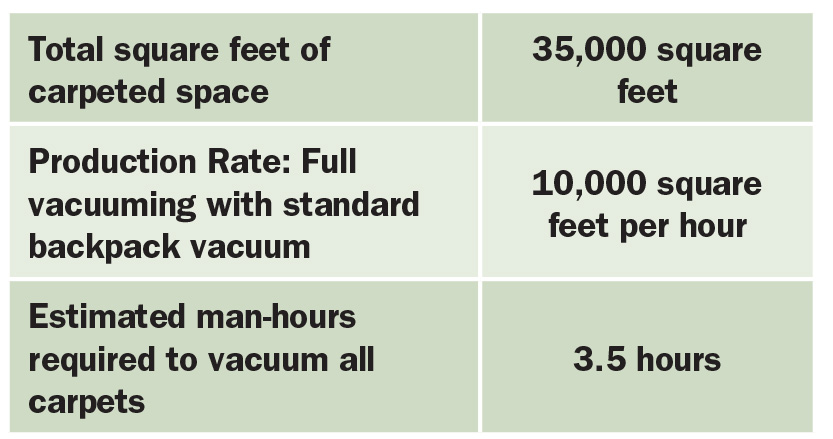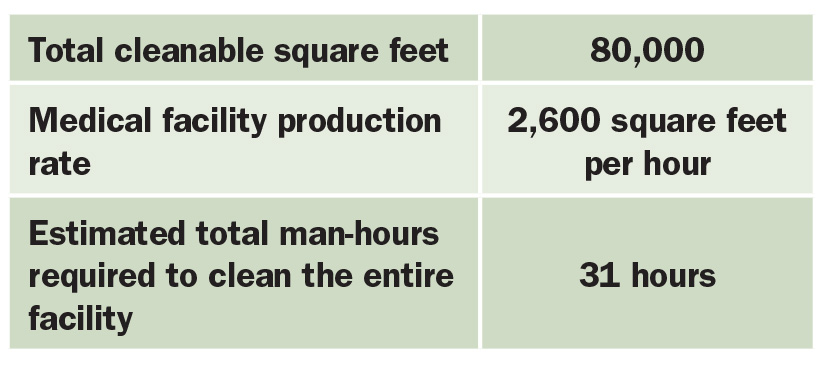
As a consultant, I often get questions about how to price janitorial jobs. My answer: It is all about the labor.
The cost of direct labor (wages) accounts for 75 to 80 percent of most janitorial budgets. By adding in the cost of labor-related items (e.g. payroll taxes, benefits, uniforms, screenings), the total overall labor cost approaches 90 percent of most janitorial spends. As such, it is safe to say that the primary emphasis should be placed on estimating the cost of labor when developing a janitorial services budget.
Janitorial Labor Math: The direct labor calculation seems to be somewhat straightforward: Hours required to complete the janitorial tasks (man-hours) multiplied by wage rates. However, it's the man-hours portion of the equation that requires a bit more consideration.
More specifically, developing a good estimate of the total man-hours required to effectively complete all tasks takes experience and expertise. Miscalculating man-hours can have a significant impact on the quality of your janitorial work.
Production Rates: There are two methodologies for estimating total man-hours to complete the scope of services — macro and micro methodologies. Each method has its strengths, but most BSCs use a hybrid approach when estimating man-hours.
Micro methodology requires you to have some building measurements and other facility data. For example, you might like to know the total square feet of each flooring type, number of restrooms and fixtures in each, number of break areas, total square feet of cleanable space, etc. Use this information in combination with industry standard production rates to calculate the estimated man-hours needed to perform each task.
Here is an example of using production rates to calculate man-hours:

You will repeat this calculation for each task (e.g. dusting and wiping surfaces, dust and damp mopping floors, emptying trash, cleaning restrooms, etc.) to estimate the overall facility man-hours requirement.
Macro methodology requires you to consider your experience working in similar facilities. For example, if you serve several medical practices, experience might indicate that the average production rate for similar medical facilities is 2,600 square feet per hour.
Here is an example of a macro calculation:

How Should You Bid? When you first start bidding accounts, I would recommend using the micro methodology. This will give you a good foundation, understanding from the ground up how jobs are priced. As you gain a greater comfort level, you can move to the macro methodology. However, when you encounter large or unique jobs, a combination of both methods may be necessary.
Jordan Tong is a BSC consultant and founder of Elite Business Coaching, in addition to being a third-generation owner of Frantz Building Services based in Owensboro, Kentucky. For more information on his coaching services, visit www.elitebusinesscoaching.net.

 The Down and Dirty on Cleaning in Virus Season
The Down and Dirty on Cleaning in Virus Season How Surfactant Use is Expanding in Commercial Cleaning
How Surfactant Use is Expanding in Commercial Cleaning